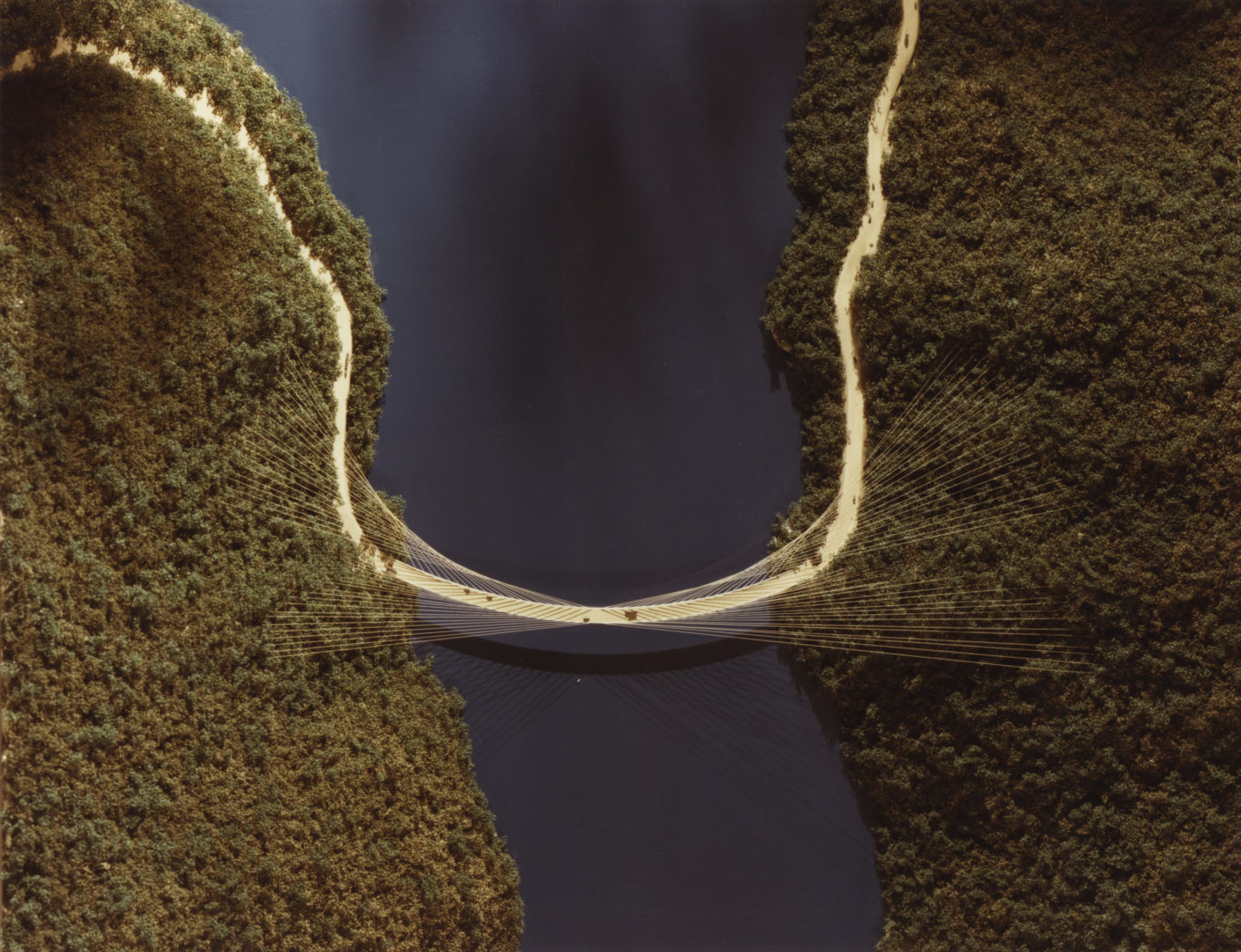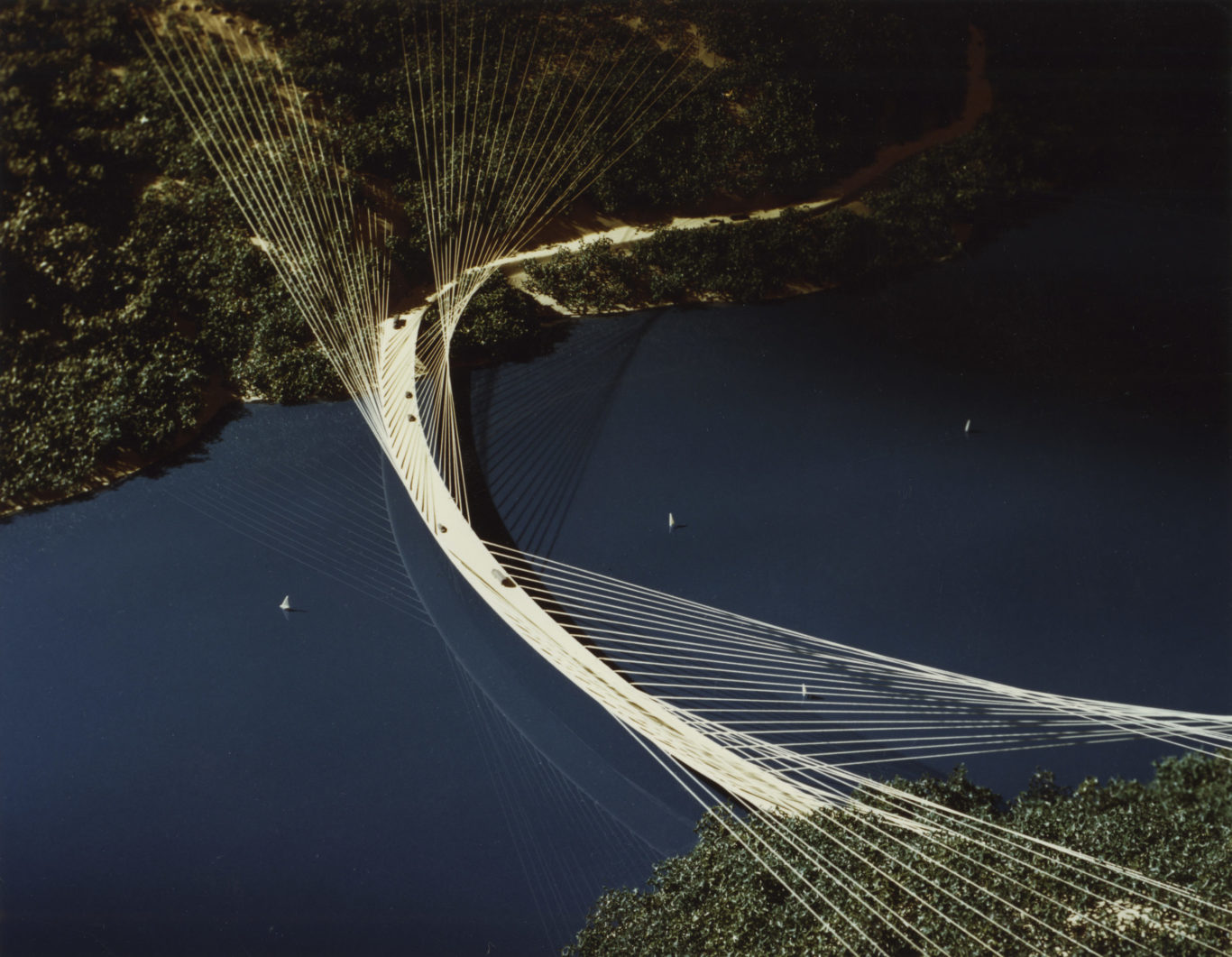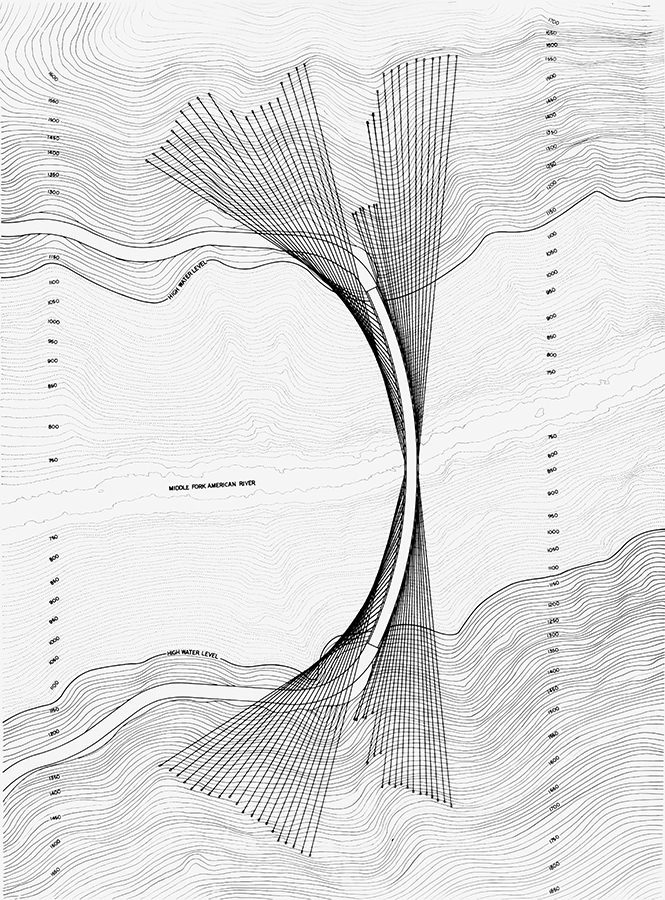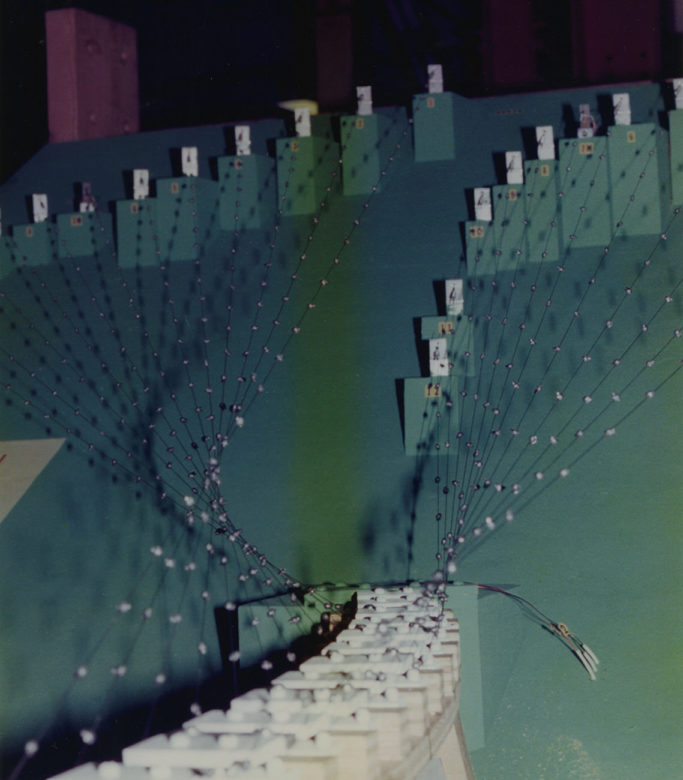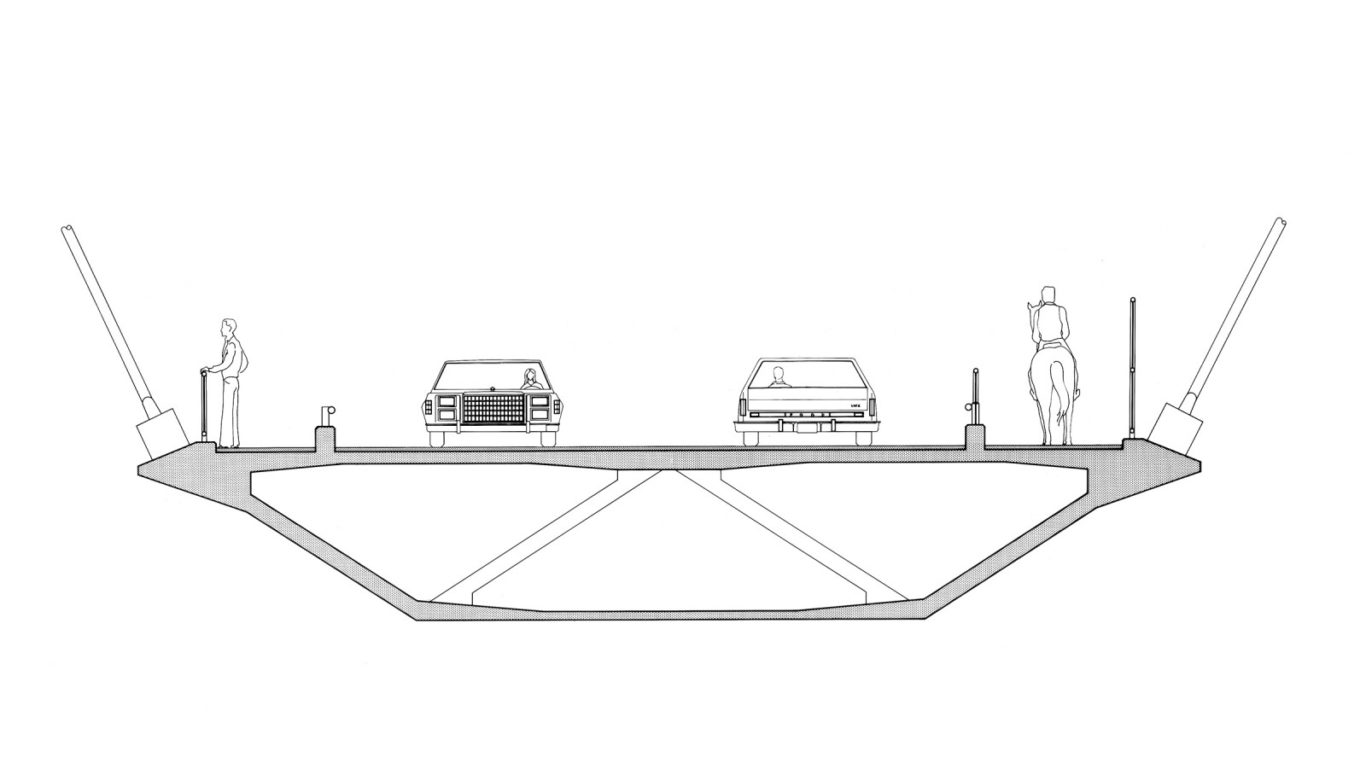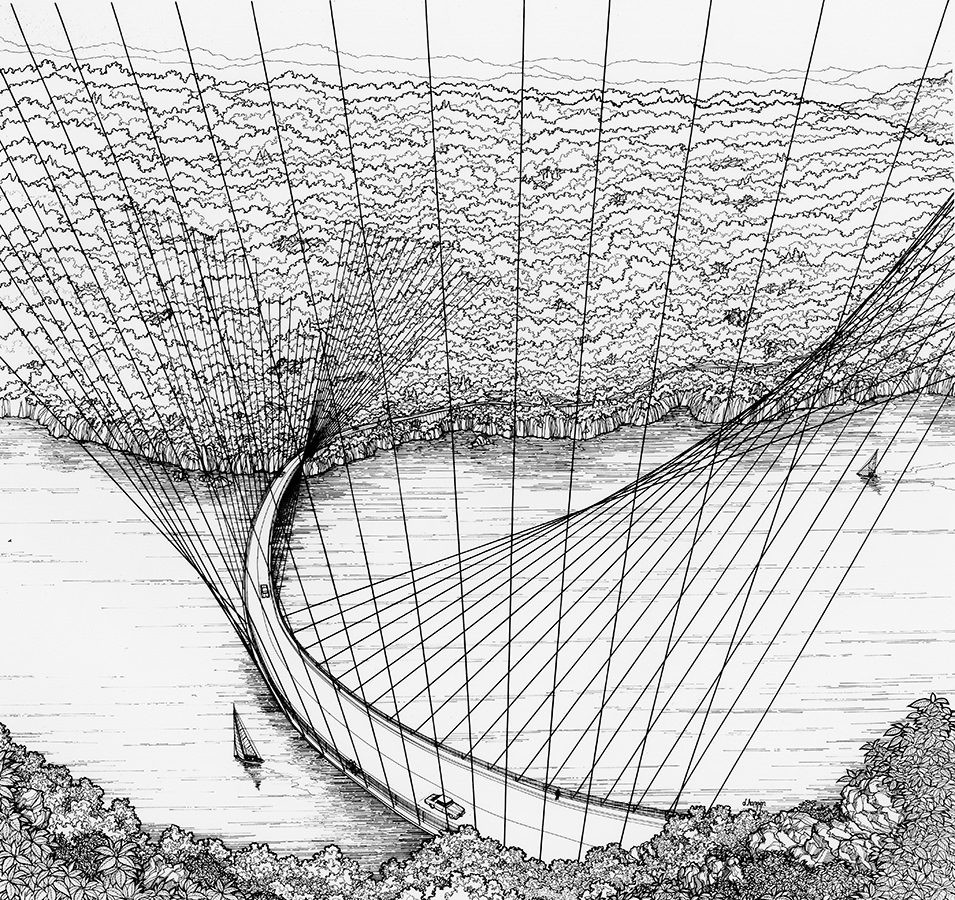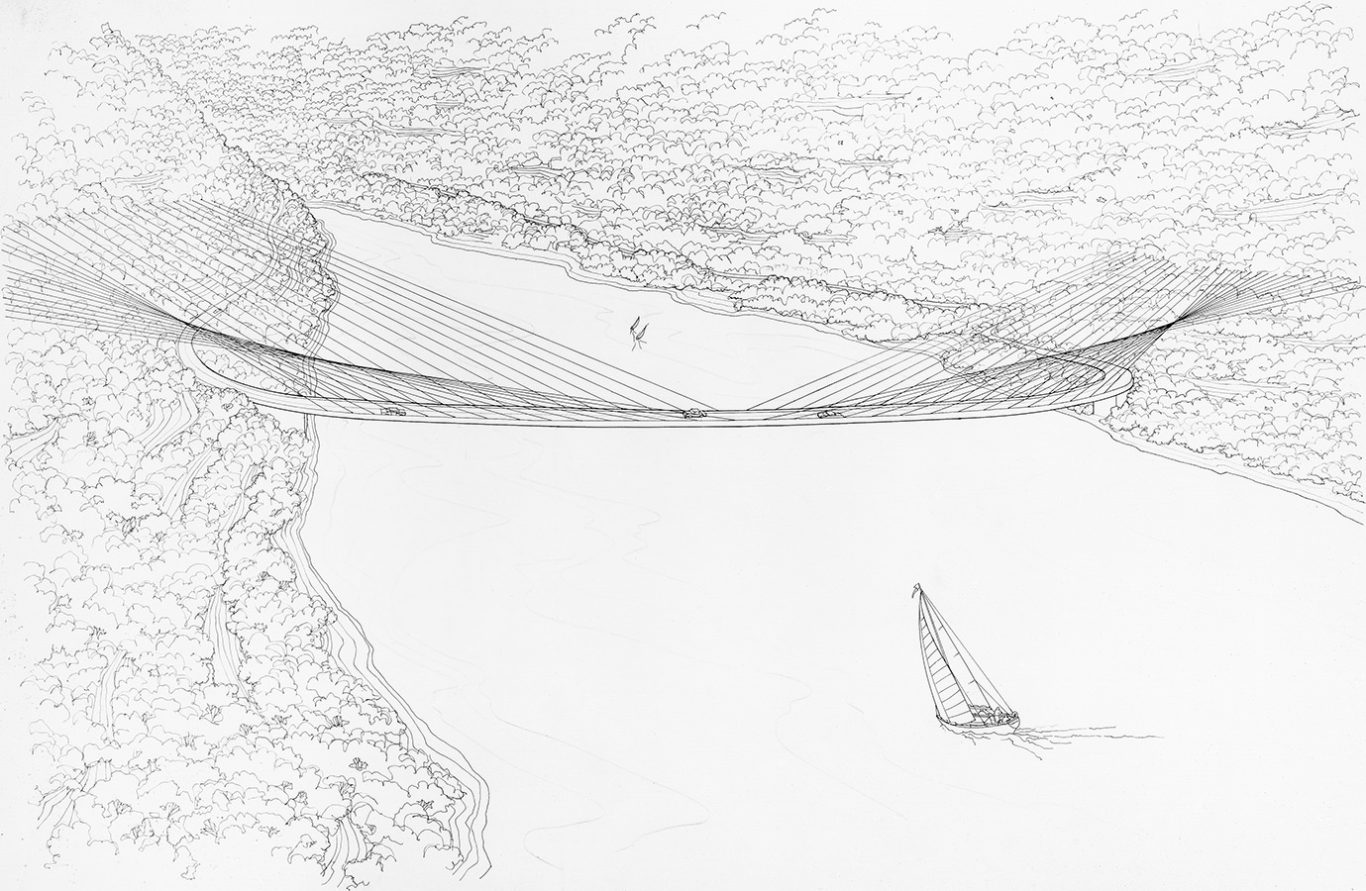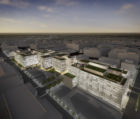In 1978, SOM architect Myron Goldsmith and engineer T.Y. Lin designed a bridge to span the middle fork of California’s American River, literally turning the discipline of bridge-building on its side. Their bridge scheme for the Ruck-a-Chucky gorge was an elegant solution to a challenging topographic problem: a wide, deep river bordered by banks with 40-degree slopes. To build a straight bridge, deep cuts and tunnels were required to create the approaches, and 500 foot-tall partially submerged pylons, which would have been difficult and expensive to make seismically stable, were needed.
With these concerns in mind, Goldsmith proposed what he called “a hanging arc,” a curved bridge suspended by 80 stayed, high-strength cables attached to anchors embedded in the hillsides. The weight of the deck would have been balanced by the surrounding array of tensile forces.
The design had a number of advantages, including the fact that the cables could be easily post-tensioned to control stresses and strains, while being anchored in the hillside in a manner that would regulate pressure on the curved steel and concrete girders. Moreover, tests showed that the curved design was particularly effective in dealing with earthquakes and high winds. To this day, the design stands as a masterwork of innovative design and structural economy.
